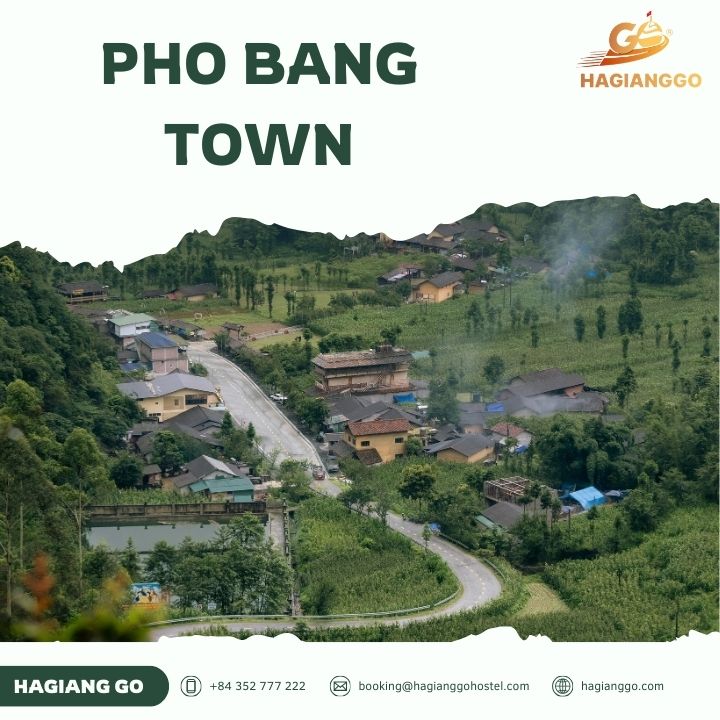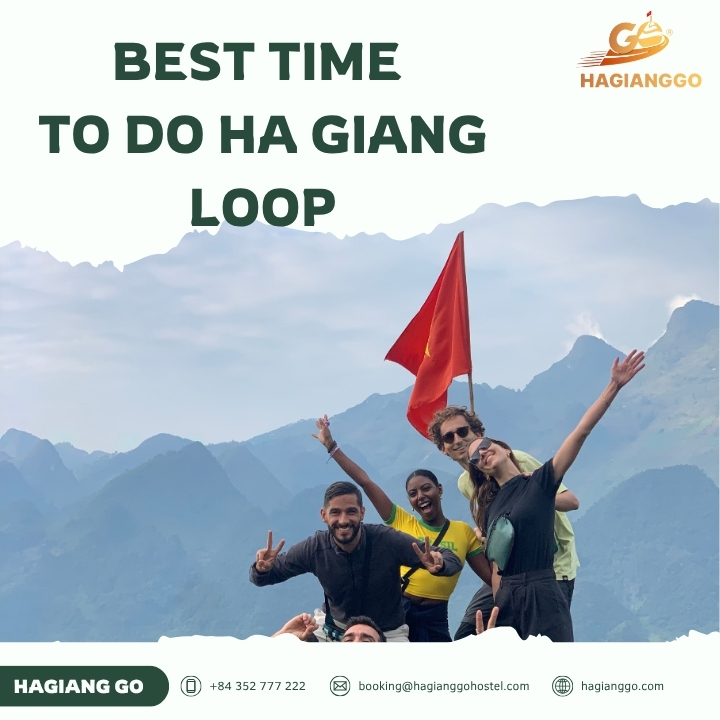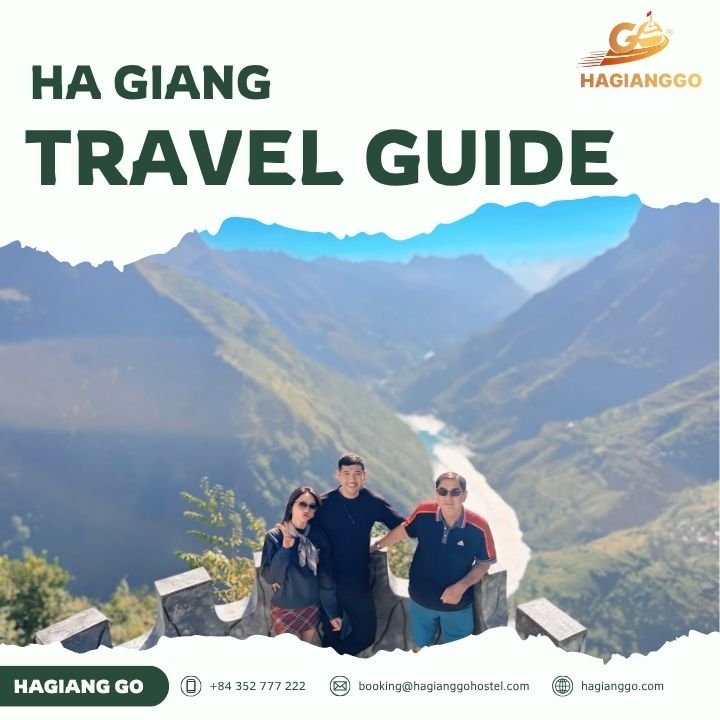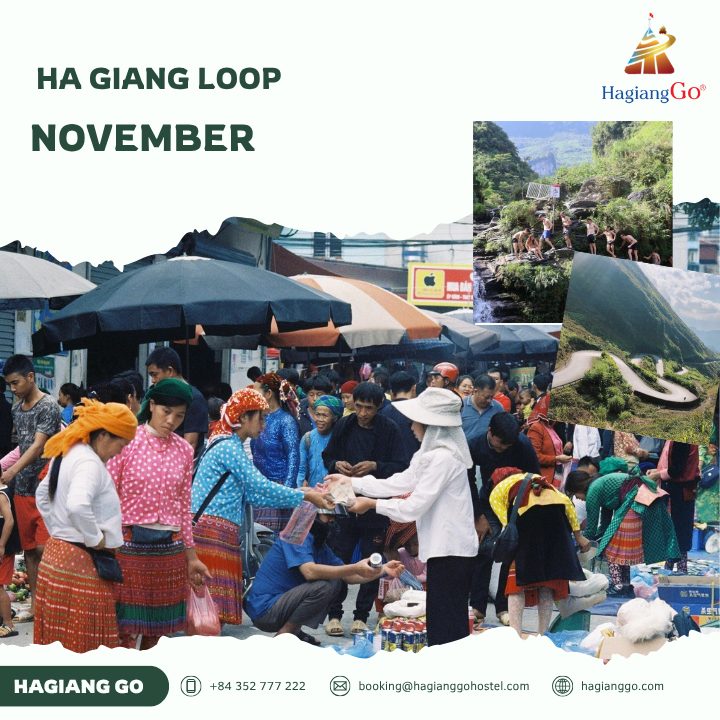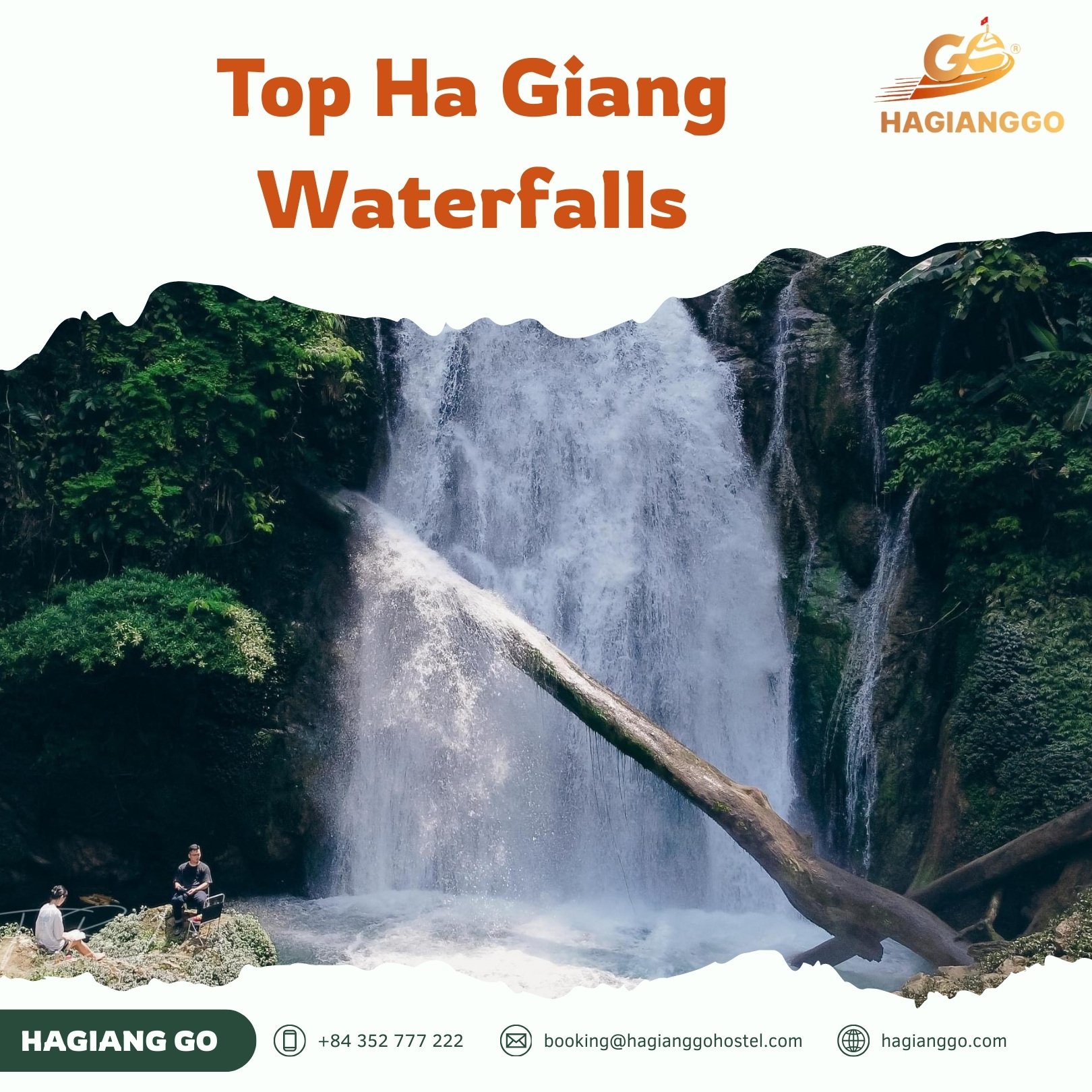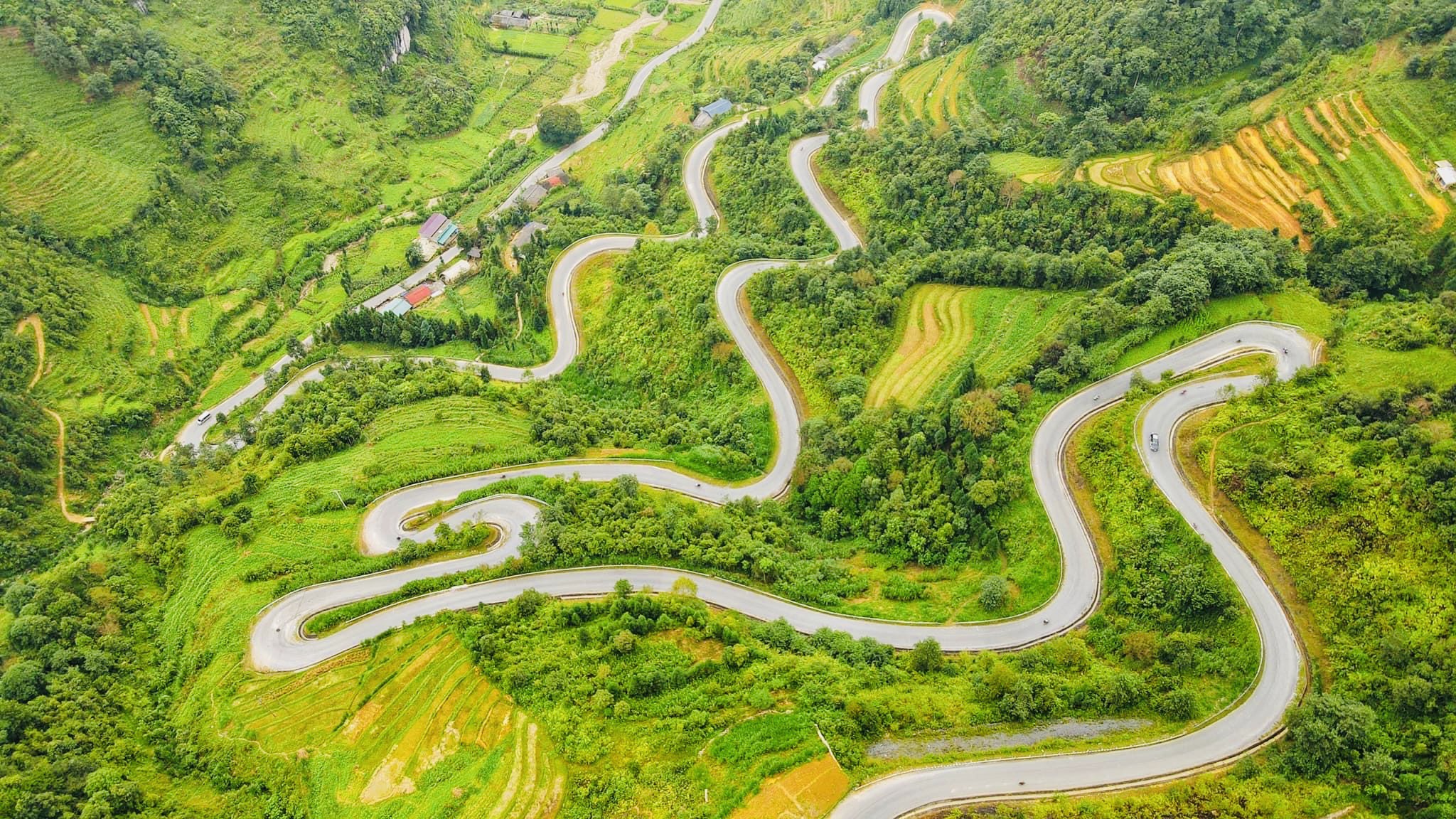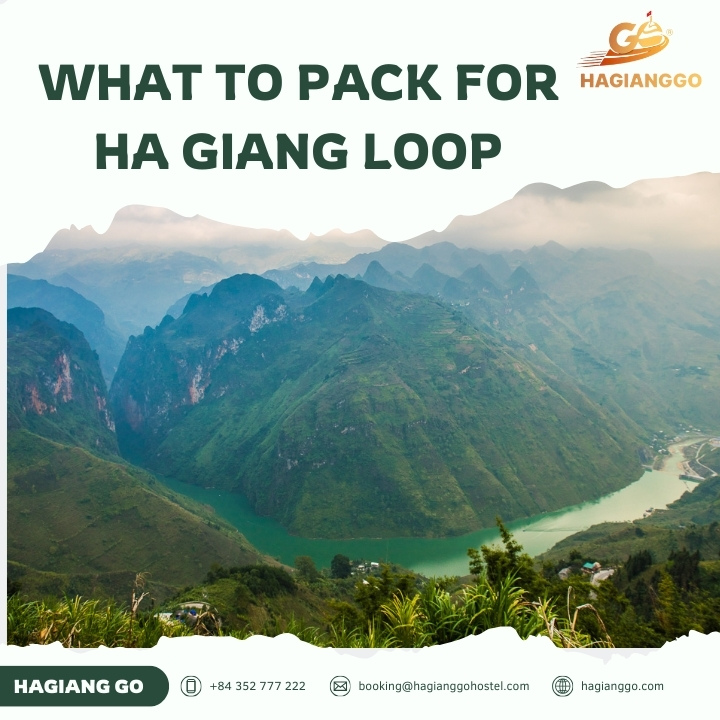Tucked away near the Vietnam - China border, Pho Bang Town feels like a step back in time. Surrounded by rolling mountains and misty valleys, this hidden gem charms visitors with its earthen houses, stone walls, and blooming buckwheat fields. Life here moves at a gentle pace - children play in quiet alleys, elders sip tea in the sunlight, and the air carries the crisp scent of the highlands. In Pho Bang, nature’s serenity and the warmth of the local community weave together into a timeless picture of peace.
Once a bustling trading hub, now a peaceful sanctuary - Pho Bang invites you to discover the soul of northern Vietnam.
A Glimpse into Pho Bang Town
Nestled deep within the rugged valleys of northern Vietnam's Dong Van Karst Plateau, Pho Bang town stands as one of Ha Giang province's most enchanting hidden treasures. This remote settlement, seemingly frozen in time, offers travelers an extraordinary glimpse into Vietnam's rich cultural tapestry and architectural heritage. Far from the bustling tourist trails, Pho Bang town in Ha Giang presents an authentic experience that few visitors ever discover.
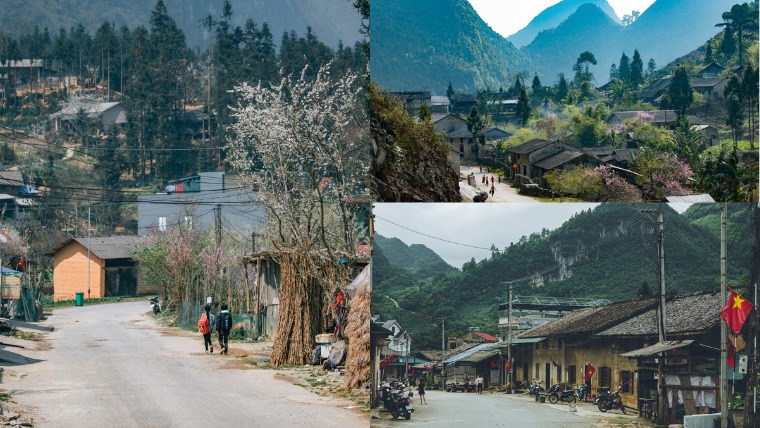
Pho Bang: A Step Back in Time
Located approximately 110 kilometers from Ha Giang city, Pho Bang town occupies a unique position in the local's cultural landscape. This ancient settlement, perched on the Dong Van Karst Plateau near the China-Vietnam border, has managed to preserve its traditional character despite the passage of centuries. The town's isolation has been both a blessing and a curse - while it has remained largely untouched by modern development, this remoteness has also preserved its authentic charm and traditional way of life.
The moment visitors arrive in Pho Bang, they're transported to a different era. The town's narrow cobblestone paths wind between centuries-old houses, where time seems to move at the gentle pace of daily village life. Here, the modern world feels distant, replaced by the rhythmic sounds of traditional crafts, the melodic conversations of local residents, and the peaceful atmosphere that defines rural Vietnam.
A Unique Fusion of Cultures
What makes Pho Bang town particularly fascinating is its remarkable cultural diversity. The settlement serves as a living testament to the harmonious coexistence of multiple ethnic communities, primarily the H'mong people and Chinese immigrants who settled here generations ago. This cultural fusion is evident everywhere - from the distinctive architectural styles that blend Vietnamese, Chinese, and H'mong influences to the daily customs and traditions that reflect this multicultural heritage.
The town's architecture tells the story of this cultural convergence. Traditional "trinh tuong" houses showcase Chinese design elements, including intricate wooden carvings, traditional roof tiles arranged in yin-yang patterns, and Chinese calligraphy adorning doorways and walls. Meanwhile, H'mong cultural influences appear in the town's textile traditions, agricultural practices, and community gatherings that bring together people from different backgrounds.
Why Visit Pho Bang Ha Giang?
Pho Bang town offers travelers something increasingly rare in our connected world - authentic tranquility and genuine cultural immersion. The town's ancient charm lies not in grand monuments or tourist attractions, but in its perfectly preserved everyday life. Visitors can witness traditional crafts being practiced as they have been for generations, observe agricultural techniques passed down through families, and experience the warm hospitality of communities who rarely encounter foreign visitors.
The peaceful atmosphere of Pho Bang provides a profound contrast to Vietnam's bustling cities and popular tourist destinations. Here, the pace of life follows natural rhythms - sunrise brings farmers to their fields, market days transform quiet streets into vibrant trading centers, and evenings are spent in community gatherings where stories and traditions are shared across generations.
The town's unique architecture represents one of northern Vietnam's best-preserved examples of traditional Chinese-influenced construction. These ancient buildings, with their distinctive earth walls and traditional roofing systems, offer photographers and architecture enthusiasts unparalleled opportunities to document authentic historical structures that have withstood centuries of change.
Planning Your Trip to Pho Bang Town with HagiangGo
Best Time to Visit Pho Bang Town
Choosing the right time to visit Pho Bang town can dramatically enhance your experience, as each season brings unique natural beauty and cultural activities to this remote corner of Ha Giang province.
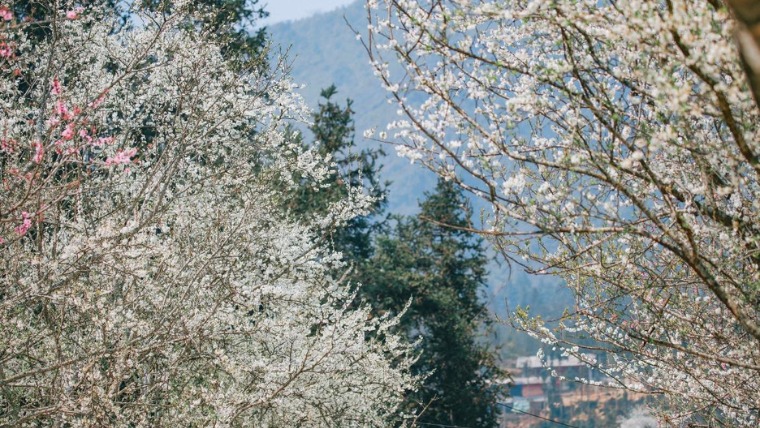
Spring: Blossom Season in Pho Bang
Spring, particularly from February to April, transforms Pho Bang town into a natural wonderland. During this period, the valley explodes with color as white plum blossoms and delicate pink peach blossoms bloom throughout the region. The contrast between these flowering trees and the ancient stone architecture creates stunning photographic opportunities that capture the essence of rural Vietnam's seasonal beauty.
Spring weather in Pho Bang is generally mild and pleasant, making it ideal for exploring the town on foot and venturing into the surrounding countryside. The comfortable temperatures and lower humidity levels provide perfect conditions for hiking, photography, and extended outdoor exploration. Local farmers begin their planting season during spring, offering visitors opportunities to observe traditional agricultural practices that have remained unchanged for generations.
Autumn: Golden Buckwheat Season
Autumn, from September to November, brings perhaps the most spectacular natural display to Pho Bang town and the surrounding Dong Van Karst Plateau. This is when the famous buckwheat flowers bloom, carpeting the valleys and hillsides in brilliant golden hues that stretch as far as the eye can see. The buckwheat season has become legendary among photographers and nature lovers, drawing visitors from across Vietnam and beyond to witness this breathtaking natural phenomenon.
The autumn months also bring clearer skies and excellent visibility, making it easier to appreciate the dramatic karst landscape that surrounds Pho Bang town. The cooler temperatures and reduced rainfall create ideal conditions for motorbike tours and extended hiking expeditions into the remote areas around the town.
Market Day: The Heart of Pho Bang Culture
Perhaps the most important timing consideration for visiting Pho Bang town is the market day schedule. Every six days, this quiet settlement transforms into a bustling trading center that attracts people from across the region. Market day represents the cultural heartbeat of Pho Bang, offering visitors an authentic glimpse into local commerce, social interactions, and community life.
During market day, the usually peaceful streets fill with H'mong families dressed in traditional clothing, Chinese traders displaying their goods, and local farmers bringing fresh produce from surrounding villages. The market creates a vibrant atmosphere where different languages blend together, traditional crafts are demonstrated and sold, and the full diversity of the region's cultural heritage is on display.
Discover more: Best Time to Do Ha Giang Loop: Complete 2025 Guide for Vietnam's Epic Motorbike Adventure
Getting to Pho Bang Town
Location and Geography
Pho Bang town is strategically positioned in Dong Van district of Ha Giang province, approximately 110 kilometers from Ha Giang city. The town sits in a valley of the UNESCO-recognized Dong Van Karst Plateau, near the Vietnam-China border. This location places Pho Bang at the intersection of geological wonder and cultural significance, surrounded by dramatic limestone formations and positioned along historical trade routes that have connected Vietnam and China for centuries.
The town's remote location means that reaching Pho Bang requires commitment and planning. There are no direct public transportation options from major cities, and the journey involves navigating mountain roads that wind through some of northern Vietnam's most spectacular but challenging terrain.
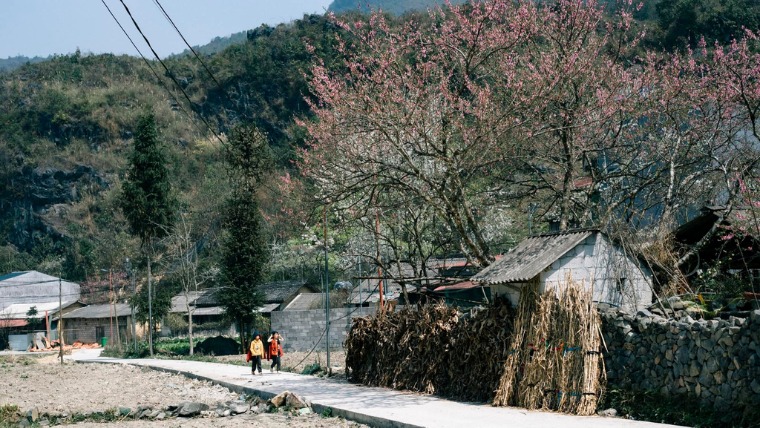
Transportation Options to Pho Bang
Motorbike Adventure: The most popular and adventurous way to reach Pho Bang town is by motorbike, either as part of the famous Ha Giang Loop or as a dedicated trip to this specific destination. The journey from Ha Giang city takes approximately 3-4 hours, following winding mountain roads that offer spectacular views of the karst landscape. This option appeals to experienced riders seeking an authentic adventure travel experience.
The motorbike route to Pho Bang passes through several other attractions, including Quan Ba Heaven Gate, the Twin Mountains, and various ethnic minority villages. Riders should be prepared for challenging road conditions, particularly during the rainy season, and should possess solid motorbike handling skills for mountain terrain.
Private Tour Option: For visitors who prefer not to drive themselves, private tour operators based in Ha Giang city offer day trips and multi-day excursions to Pho Bang town. These tours typically include transportation in 4WD vehicles, local guides who can provide cultural context and language assistance, and sometimes overnight homestay arrangements.
Local Transportation: Once in the general Dong Van area, local minibuses and shared taxis occasionally travel to Pho Bang, but schedules are irregular and depend on passenger demand. This option works best for travelers who have flexible schedules and don't mind waiting for transportation connections.
Read more: Ha Giang weather guide - What to expect in each season?
Top Attractions and Experiences in Pho Bang Town
The Ancient Architecture of Pho Bang
The architectural heritage of Pho Bang town represents one of northern Vietnam's most significant examples of traditional Chinese-influenced construction. The town's distinctive buildings, known locally as "trinh tuong" houses, showcase construction techniques and design principles that have remained virtually unchanged for over a century.
Traditional "Trinh Tuong" Houses
These remarkable structures demonstrate the ingenuity of traditional building techniques adapted to local materials and climate conditions. The walls of Pho Bang's ancient houses are constructed using a mixture of clay, earth, and local materials, creating distinctive colors that range from rich reddish-brown to warm ivory yellow. This natural pigmentation comes from the local soil composition and mineral content found in the Dong Van Karst Plateau region.
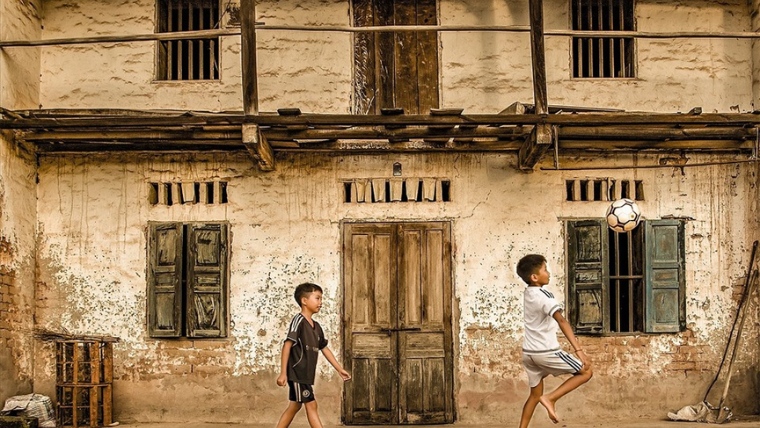
The construction process for these walls involves techniques passed down through generations, where local craftsmen mix clay with organic binding agents and shape the mixture into thick, durable walls. Over time, these earth walls develop a beautiful patina and texture that reflects the changing seasons and weather patterns of the region.
Yin-Yang Tiled Roofs and Architectural Details
The roofing systems of Pho Bang's traditional houses feature intricate arrangements of curved tiles positioned to create yin-yang patterns that reflect Chinese philosophical influences. These tiles, often handmade using local clay, are arranged in overlapping patterns that provide excellent protection against the region's variable weather while creating visually striking geometric designs.
The wooden elements of these houses, including doors, window frames, and decorative elements, showcase exceptional craftsmanship. Antique wooden doors feature intricate carvings, traditional joinery techniques, and hardware that reflects the multicultural influences present in Pho Bang's development. Many doors and architectural elements display Chinese scripts and couplets that serve both decorative and spiritual purposes, offering blessings for the families who live within.
Cultural Significance of Architectural Elements
The Chinese scripts and couplets found on doorways and walls throughout Pho Bang town carry deep cultural meaning. These inscriptions often include wishes for prosperity, health, and happiness, reflecting the Chinese cultural tradition of using written characters as protective and aspirational elements in domestic architecture. For visitors who can read Chinese characters, these inscriptions provide fascinating insights into the hopes, beliefs, and cultural values of the families who have lived in these houses across multiple generations.
The Vibrant Pho Bang Market Experience
The Pho Bang market represents far more than a simple commercial activity - it serves as the social and cultural center of the community, bringing together diverse ethnic groups and creating a vibrant atmosphere that transforms the entire town every six days.
Market Day Transformation
On market days, Pho Bang town undergoes a remarkable transformation. The usually quiet streets fill with colorful displays of goods, temporary stalls constructed from bamboo and fabric, and hundreds of people who travel from surrounding villages to participate in this traditional trading event. The contrast between market day and regular days provides visitors with two completely different experiences of the same location.
Early morning on market day brings the most authentic experience, as vendors arrive in the pre-dawn darkness to set up their stalls and arrange their goods. By sunrise, the town buzzes with activity as local residents begin their shopping, social interactions commence, and the full energy of the community comes alive.
Cultural Immersion Opportunities
The Pho Bang market offers unparalleled opportunities for cultural immersion and photography. H'mong women wearing traditional indigo-dyed clothing create striking visual contrasts against the ancient stone architecture. Chinese traders demonstrate traditional negotiation techniques and display goods that reflect both local production and cross-border trade relationships.
Visitors can observe traditional crafts being demonstrated and sold, including handwoven textiles, silver jewelry created using ancient techniques, and agricultural tools crafted by local blacksmiths. The market also features traditional foods and ingredients that provide insight into the dietary habits and culinary traditions of the region's diverse ethnic communities.
The social aspect of market day extends far beyond commerce. Families use market day as an opportunity for social gatherings, sharing news and information from different villages, and maintaining community connections across the scattered settlements of the region.
Best Places to visit around Pho Bang Town
Rugged Rock Mountains and Karst Landscape
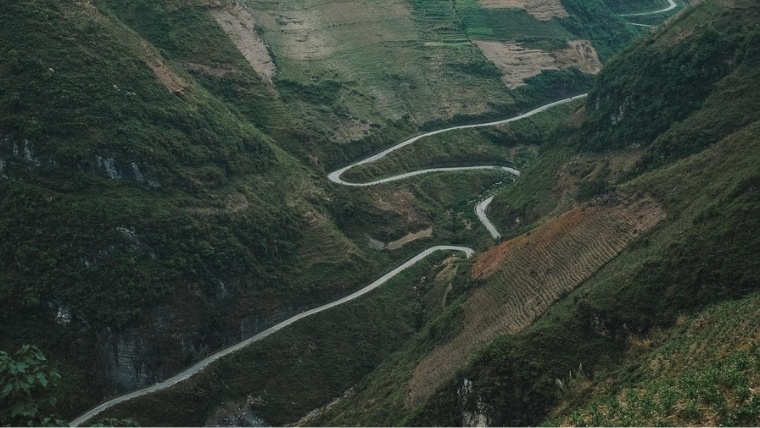
The dramatic geological setting of Pho Bang town provides a spectacular backdrop for all activities and experiences. The surrounding landscape features towering limestone formations characteristic of the Dong Van Karst Plateau, creating a moonscape-like environment that seems almost otherworldly. These ancient rock formations, carved by millions of years of geological activity, create natural fortresses and valleys that have sheltered human settlements for centuries.
The karst landscape around Pho Bang includes numerous caves, underground rivers, and unique rock formations that create exceptional hiking and exploration opportunities. The contrast between the ancient human settlements and the primordial landscape creates a profound sense of connection between human culture and natural environment.
Rose Gardens and Valley Flora
Despite its remote location and challenging climate, Pho Bang town features several small but significant rose gardens that add unexpected beauty to the valley setting. These gardens, carefully tended by local residents, create pockets of color and fragrance that provide pleasant surprises for visitors exploring the town's neighborhoods.
The valley's microclimate supports various types of vegetation that create seasonal displays throughout the year. Local residents have learned to cultivate both practical and ornamental plants that can thrive in the unique conditions created by the surrounding karst landscape and elevation.
Seasonal Flower Displays
Throughout the year, different seasonal flowers create spectacular natural displays in and around Pho Bang town. Yellow mustard flowers bloom in winter and early spring, creating brilliant golden carpets across terraced fields and valley floors. Peach blossoms transform the landscape during spring months, while the famous buckwheat flowers of autumn create the most spectacular and widely photographed natural phenomenon in the region.
These seasonal displays are not merely natural occurrences but result from centuries of agricultural practices that have shaped the landscape around Pho Bang town. Local farmers have learned to work with natural cycles to create both productive and beautiful environments that sustain their communities while creating spectacular scenery for visitors.
Local Culture and Daily Life in Pho Bang Town
The H'mong and Chinese Communities
The cultural richness of Pho Bang town stems from the harmonious coexistence of different ethnic communities, each contributing unique traditions, skills, and perspectives to the town's collective identity. Understanding these communities provides visitors with deeper appreciation for the complexity and authenticity of life in this remote settlement.
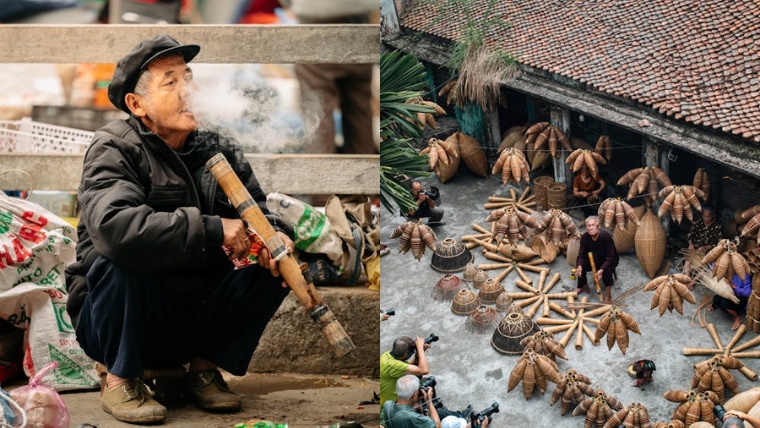
H'mong Cultural Traditions
The H'mong people represent the largest ethnic minority group in the Pho Bang area, and their cultural traditions profoundly influence daily life in the town. H'mong families maintain traditional practices including textile production, agricultural techniques, and social customs that have been passed down through generations. Women continue to practice traditional embroidery and textile weaving, creating the distinctive indigo-dyed clothing that has become iconic of northern Vietnam's ethnic minorities.
H'mong agricultural practices reflect a deep understanding of the local environment and climate. Their terraced farming techniques, crop rotation systems, and animal husbandry practices demonstrate sustainable approaches to mountain agriculture that have sustained communities for centuries. Visitors can observe these traditional practices during different seasons and gain insights into how communities adapt to challenging environmental conditions.
Chinese Cultural Influences
The Chinese community in Pho Bang town traces its roots to trading families and immigrants who settled in the region generations ago. Their influence appears in architectural styles, business practices, and cultural traditions that blend seamlessly with other community influences. Chinese New Year celebrations, traditional festivals, and family customs continue to be observed, creating a rich cultural calendar that provides visitors with opportunities to experience authentic cultural celebrations.
Chinese trading traditions continue to influence the town's commercial activities, particularly during market days. Traditional negotiation styles, product presentation techniques, and customer relationship practices reflect Chinese commercial culture adapted to local conditions and community relationships.
Daily Life and Community Interactions
The daily rhythm of life in Pho Bang town follows patterns established by agricultural necessity and community tradition. Early morning brings farmers to their fields, where they tend to crops and livestock using traditional techniques and tools. The pace of life remains unhurried, allowing for social interactions and community activities that strengthen relationships between families and ethnic groups.
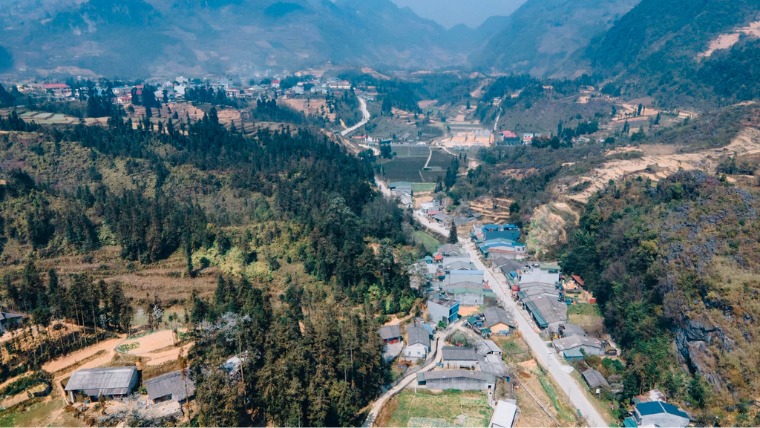
Authentic Experiences in Pho Bang
Observing Traditional Activities
Visitors to Pho Bang town can observe authentic daily activities that provide insights into traditional ways of life. Elderly residents often gather in public spaces to socialize, with some continuing traditional practices like betel nut chewing - a custom that reflects historical social habits and provides opportunities for community interaction.
Women throughout the town engage in traditional handicraft activities including embroidery, weaving, and textile production. These activities serve both practical and cultural purposes, creating necessary household items while maintaining traditional skills and artistic expressions. Visitors can often observe these activities taking place in courtyards and public spaces, providing excellent opportunities for cultural photography and understanding traditional gender roles and family structures.
Children in Pho Bang town play traditional games and participate in family activities that connect them to their cultural heritage. Their games often reflect agricultural themes, seasonal activities, and community values, providing insights into how cultural traditions are transmitted across generations.
Homestay Experiences
Staying with local families through homestay arrangements provides the deepest level of cultural immersion available in Pho Bang town. Homestay experiences allow visitors to participate in daily family routines, share meals prepared using traditional methods and local ingredients, and gain firsthand understanding of customs and traditions that might otherwise remain hidden from casual visitors.
Homestay families typically include visitors in household activities such as meal preparation, agricultural work, and social activities. This participation provides practical understanding of how families in Pho Bang manage their daily lives, maintain their cultural traditions, and adapt traditional practices to contemporary challenges.
Evening activities in homestay situations often include storytelling sessions where elder family members share local legends, historical accounts, and personal experiences that provide context for understanding the town's development and cultural significance.
The Tranquil Ambiance
Perhaps the most profound aspect of visiting Pho Bang town is experiencing its tranquil ambiance - a quality increasingly rare in our connected world. The town's isolation from modern transportation networks and communication systems creates an environment where natural rhythms still dominate daily life.
The peaceful atmosphere of Pho Bang provides visitors with opportunities for reflection, contemplation, and appreciation of simple pleasures. Morning walks through the town's quiet streets, listening to natural sounds and observing traditional activities, create meditative experiences that many visitors find profoundly restorative.
This tranquility is not merely the absence of modern noise and activity, but the presence of positive qualities created by community harmony, connection to natural environment, and maintenance of traditional values that prioritize relationships and sustainable living practices.
Accommodation and Dining in Pho Bang Town
Accommodation Options
Due to its remote location and small size, Pho Bang town offers limited but authentic accommodation options that provide visitors with genuine experiences of local hospitality and traditional living arrangements.
Homestay Accommodations
Homestays represent the primary and most rewarding accommodation option for visitors to Pho Bang town. These family-based arrangements provide rooms in traditional houses where visitors share living space with local families and participate in household routines. Homestay accommodations typically include simple but clean sleeping areas, shared bathroom facilities, and inclusion in family meals prepared using traditional methods and local ingredients.
The advantage of homestay accommodation extends far beyond simple lodging. Guests gain access to family knowledge about local history, cultural traditions, and daily life practices that would be impossible to learn through other forms of accommodation. Family members often serve as informal guides, sharing insights about the best times to visit local attractions, explaining cultural practices, and providing introductions to other community members.
Homestay arrangements should be made in advance when possible, as the number of families prepared to accommodate visitors is limited. Communication may require patience and creativity, as English language skills vary among host families, but this communication challenge often becomes part of the cultural learning experience.
Dining Experiences
The dining options in Pho Bang town reflect the community's size and remote location, but they provide authentic experiences of local cuisine and traditional food preparation methods.
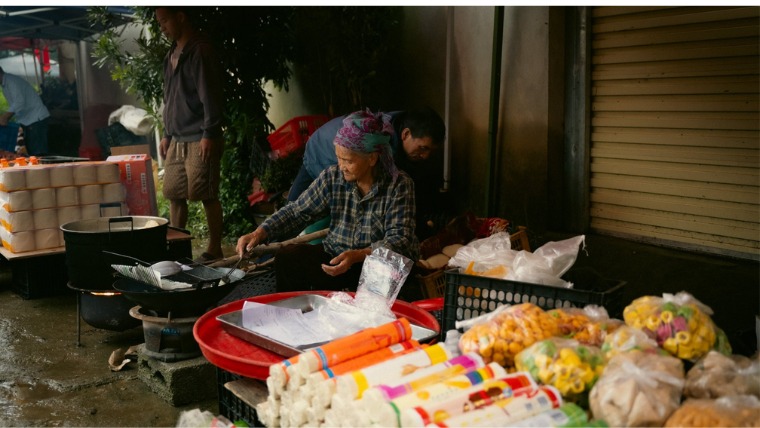
Local Restaurants and Food Stalls
Several small restaurants in Pho Bang town serve traditional dishes prepared using local ingredients and time-tested recipes. These establishments typically offer simple but flavorful meals that reflect the agricultural products and culinary traditions of the region's ethnic communities.
Local specialties include dishes featuring corn, buckwheat, and other crops that grow well in the mountainous environment. Meat dishes often feature pork, chicken, and occasionally goat, prepared using traditional smoking and preservation techniques that reflect historical methods of food storage in remote mountain communities.
Market day brings additional food options as temporary vendors set up stalls serving fresh preparations and traditional snacks. These market-day food experiences provide opportunities to sample specialties that might not be available at other times and to observe food preparation techniques used by different ethnic communities.
Top 10+ food in Ha Giang to try - A culinary journey through Vietnam's northern mountains
Traditional Food Preparation
The traditional food preparation methods used in Pho Bang town reflect adaptation to local ingredients, seasonal availability, and cultural preferences of the area's ethnic communities. Many families maintain traditional smokehouses, preservation techniques, and cooking methods that have been used for generations.
Corn plays a particularly important role in local cuisine, appearing in various forms including traditional alcohols, bread-like preparations, and fresh preparations during harvest season. Understanding these traditional uses of local agricultural products provides insights into how communities adapt their diets to environmental conditions and seasonal variations.
Conclusion: A Journey to the Past
Pho Bang town stands as a remarkable testament to the enduring power of traditional culture and community values in an increasingly modernized world. This hidden gem of Ha Giang province offers visitors something genuinely rare - an authentic glimpse into ways of life that have remained largely unchanged for generations, preserved not in museums or tourist attractions, but in the daily rhythms of a living community.
A Unique and Unforgettable Experience
The experience of visiting Pho Bang town transcends typical tourism categories. It's not primarily about sightseeing in the conventional sense, but about witnessing and participating in authentic cultural traditions that continue to thrive in their original context. The town's ancient architecture, vibrant market days, and multicultural community create a unique environment where visitors can observe the practical results of centuries of cultural adaptation and preservation.
The peaceful atmosphere and slow pace of life in Pho Bang provide profound contrast to the urgency and complexity of modern urban environments. Many visitors report that their time in Pho Bang helps them rediscover appreciation for simple pleasures, community relationships, and connection to natural rhythms that they had lost in their regular lives.
The cultural diversity represented in Pho Bang - the harmonious coexistence of H'mong, Chinese, and other ethnic communities - demonstrates successful models of multicultural cooperation that have practical relevance for contemporary challenges. Observing how different cultural traditions have been maintained while creating unified community identity provides valuable insights into cultural preservation and community building.
Preserving Authentic Experiences
As tourism interest in northern Vietnam continues to grow, Pho Bang town represents something increasingly precious - a destination that remains fundamentally authentic rather than adapted for tourist consumption. The town's isolation has protected it from the commercial development that often changes the character of popular tourist destinations, allowing visitors to experience genuine cultural interactions and traditional ways of life.
This authenticity carries responsibilities for visitors. The community's hospitality and willingness to share their cultural heritage with outsiders depends on respectful tourist behavior that recognizes the value of what is being shared. Visitors have opportunities to support local families through homestay arrangements, purchases at local markets, and respectful engagement with cultural traditions.
Final Recommendations for Visitors
To fully appreciate what Pho Bang town offers, visitors should plan for sufficient time to experience the town's different rhythms and activities. A single day visit, while possible, cannot capture the full depth of cultural experiences available to those who stay longer and participate more fully in community life.
- Early Morning Walks: The most peaceful and authentic experience of Pho Bang comes during early morning hours before daily activities begin in earnest. Taking an early morning walk through the town's quiet streets provides opportunities to appreciate the architectural heritage, natural beauty, and tranquil atmosphere that make this destination special. The quality of light during early morning hours also creates excellent conditions for photography.
- Timing Market Days: Planning visits to coincide with market days every six days provides the most vibrant and culturally rich experience possible in Pho Bang town. The transformation of the quiet settlement into a bustling cultural center demonstrates the community's continued vitality and provides unparalleled opportunities for cultural observation and photography.
- Engaging with Local Communities: The most rewarding experiences in Pho Bang come through respectful engagement with local residents. Learning basic Vietnamese phrases, showing interest in traditional crafts and agricultural practices, and participating in homestay arrangements create opportunities for cultural exchange that benefit both visitors and local communities.
Pho Bang town in Ha Giang province represents more than a travel destination - it's a window into traditional ways of life that continue to thrive despite the challenges of modernization and globalization. For travelers seeking authentic cultural experiences, peaceful environments, and connections to traditional values, Pho Bang offers rewards that extend far beyond typical tourist satisfaction into the realm of genuine cultural understanding and personal enrichment.
The journey to Pho Bang may require effort and planning, but the rewards - authentic cultural immersion, spectacular natural beauty, and the profound peace that comes from experiencing life at a more natural pace - make this remote corner of Vietnam one of Southeast Asia's most valuable hidden treasures.
